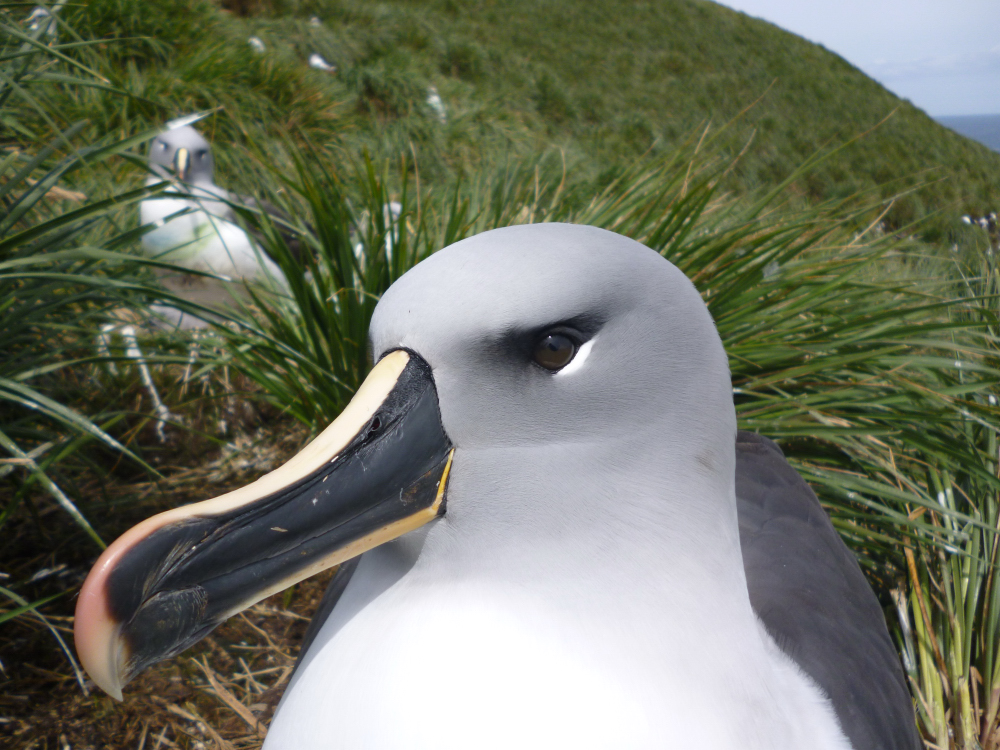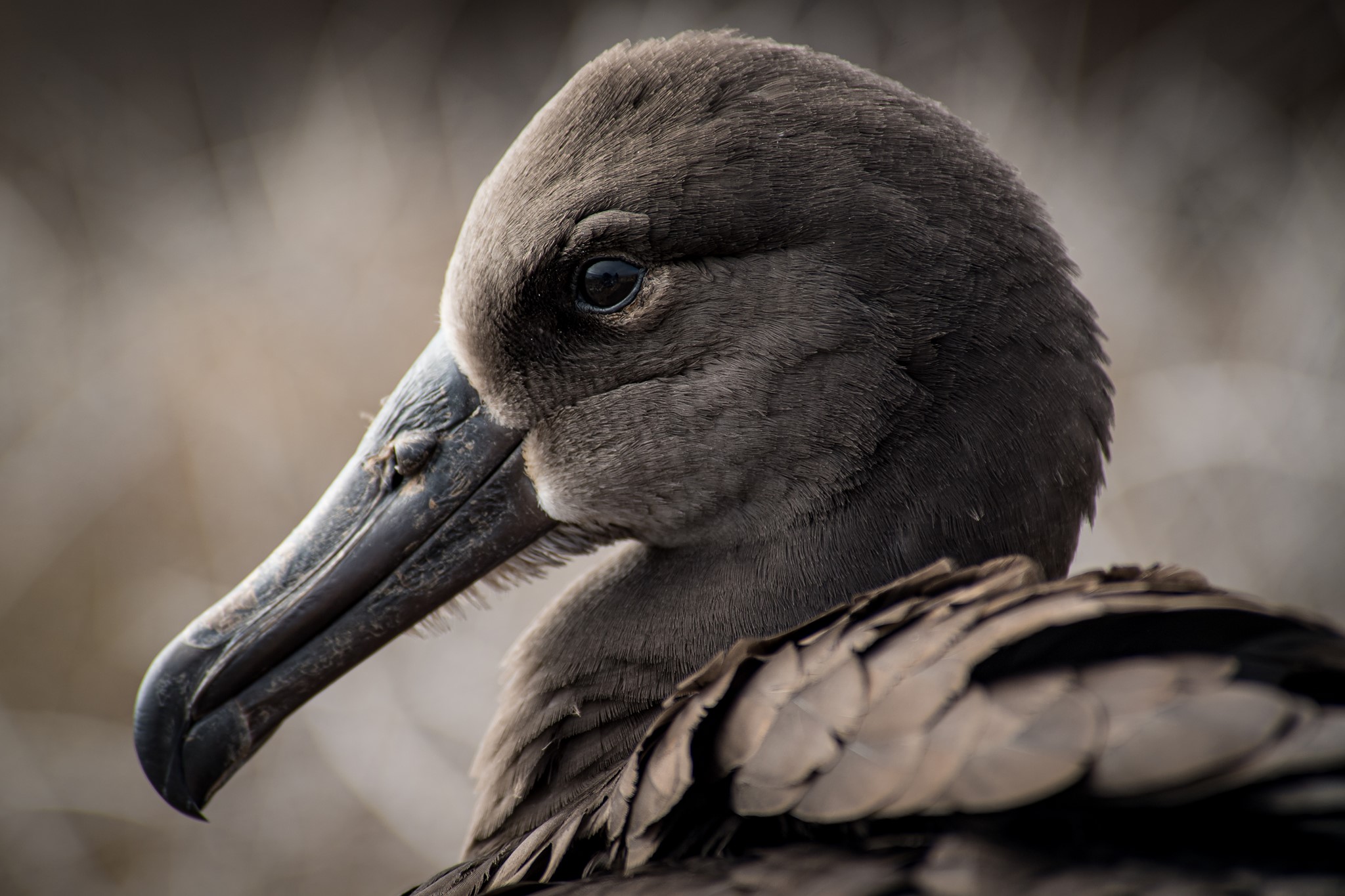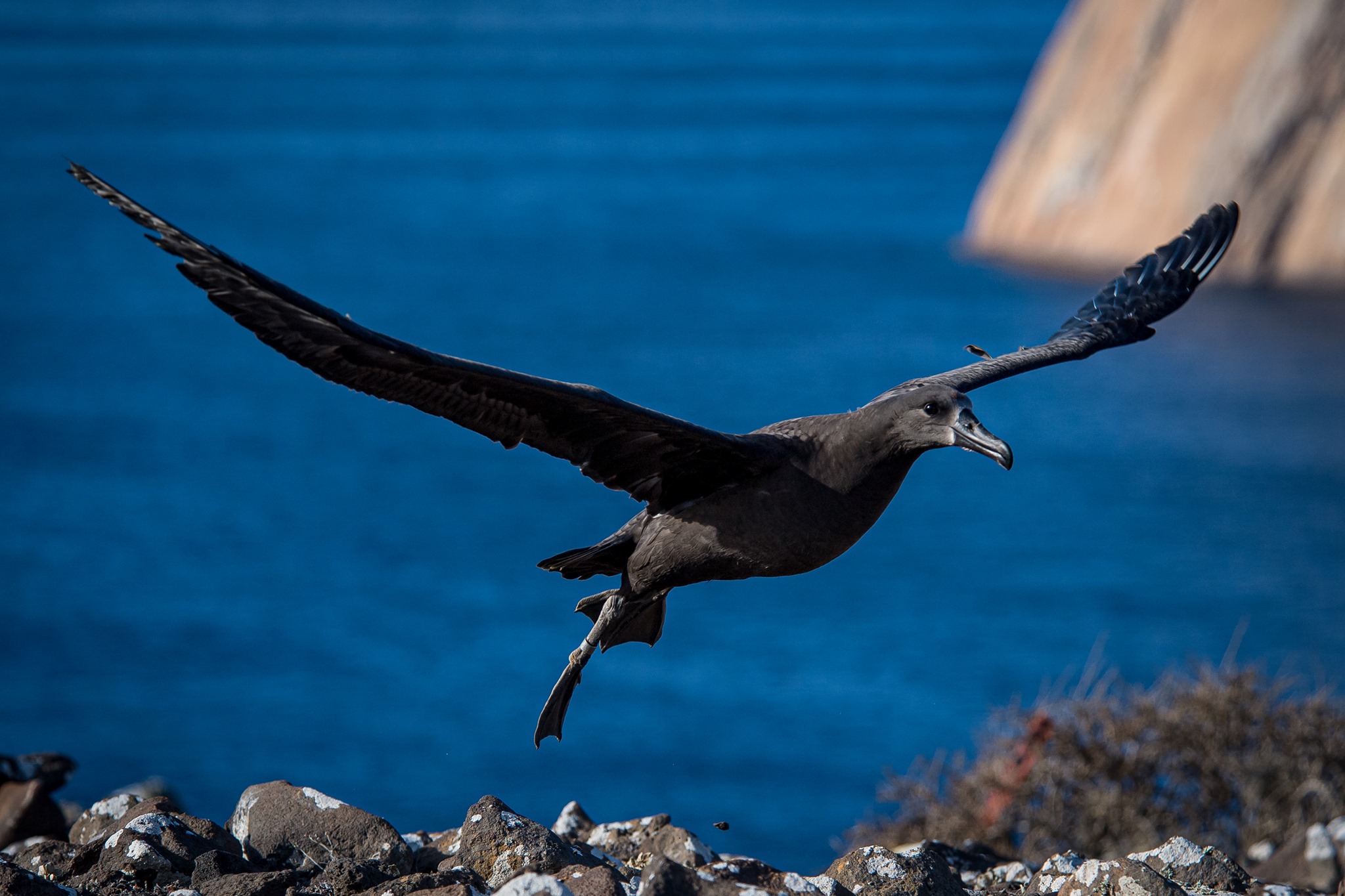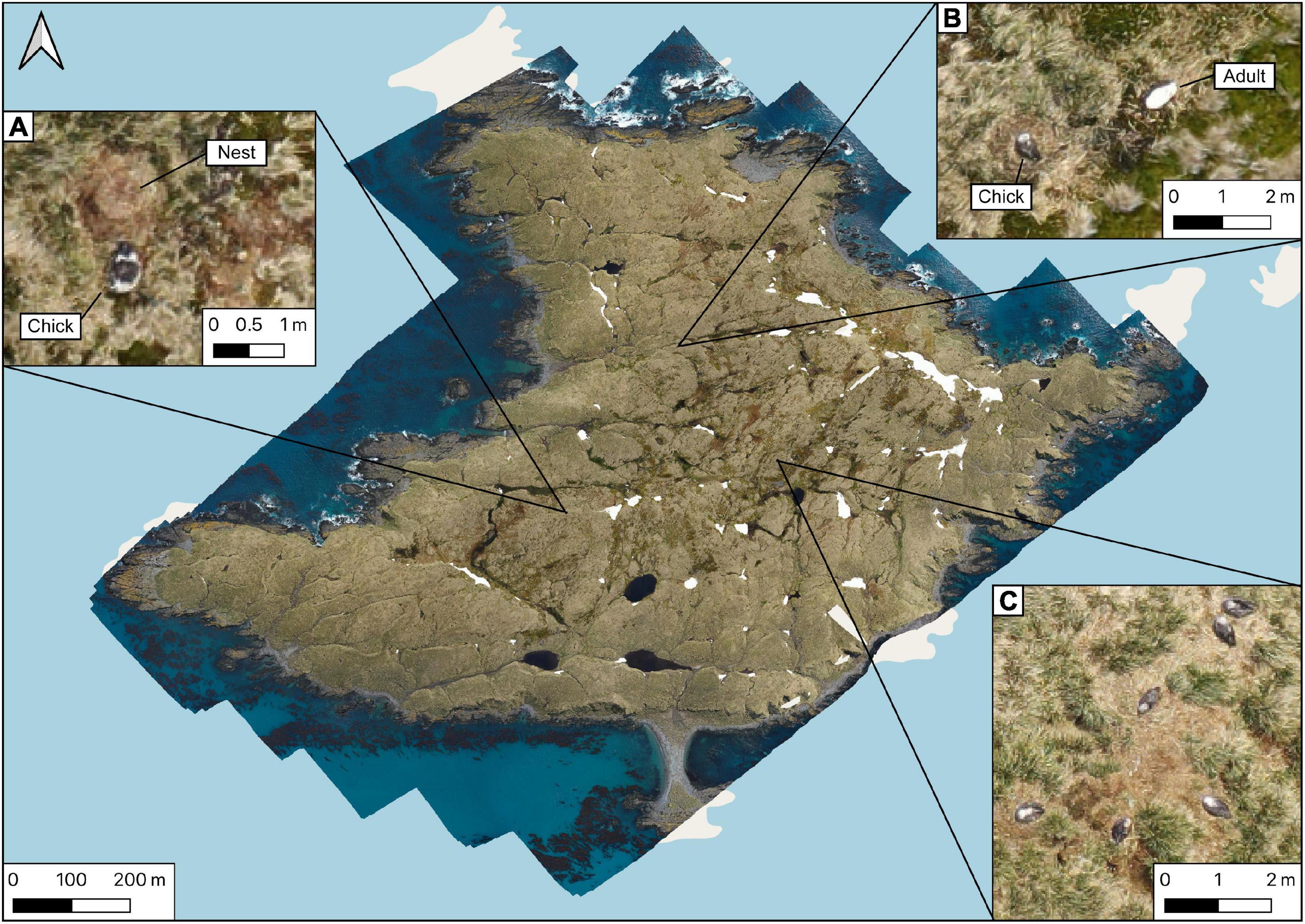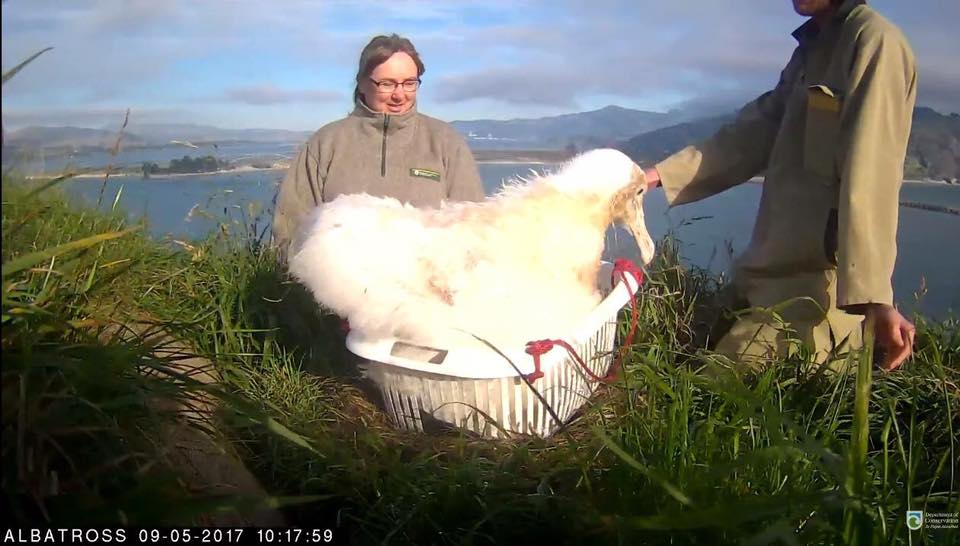
Hands-on management: a Northern Royal Albatross chick gets weighed at Pukekura/Taiaroa Head; Department of Conservation webcam photograph
The Northern Royal Albatross Diomedea sanfordi colony on New Zealand’s mainland at Pukekura/Taiaroa Head is intensively managed in a number of ways aimed at increasing breeding success. One method regularly used is the supplementary feeding of chicks deemed to be underweight for their age that has been used successfully for decades at the colony; over the last three seasons more than 275 supplementary feeds have been carried out without incident. So far this season, 15 chicks have received a total of 77 supplementary feeds.
The Department of Conservation has now reported that an underweight 146-day-old male chick died after a routine supplementary feeding this month. “The rangers noticed the chick had laboured breathing after the feed. The bird’s condition deteriorated very quickly and unfortunately it died.” The chick was sent to Massey University for a necropsy to determine the exact cause of death, where a sizeable piece of rocky material resembling charcoal was found in the chick’s trachea, causing asphyxiation.
“It is not known how the chick first ingested the rock, but it is thought the parent may have picked it up while fishing (as charcoal floats) and fed it to the chick, which then regurgitated the material while being supplementarily fed and inhaled it. Chicks can become underweight for several reasons. Their parents may be inexperienced foragers or new to feeding a chick, there may be poor food resources at sea, or the chick may have lost a parent so is only getting food from one parent. It may also be caused by an underlying health condition. The colony at Pukekura is intensively managed to give the chicks the best chance of survival. Issues that rangers help to mitigate include extreme temperatures, fly strike on hatching chicks, predators, and underweight chicks.”
There are now 32 chicks remaining out of the 36 that hatched this season from 41 eggs laid late last year (a hatching success of 87.8%) at Pukekura/Taiaroa Head, a record number since the first chick fledged in 1938.
Read the original news post here.
John Cooper, ACAP Information Officer, 16 July 2021

 English
English  Français
Français  Español
Español 